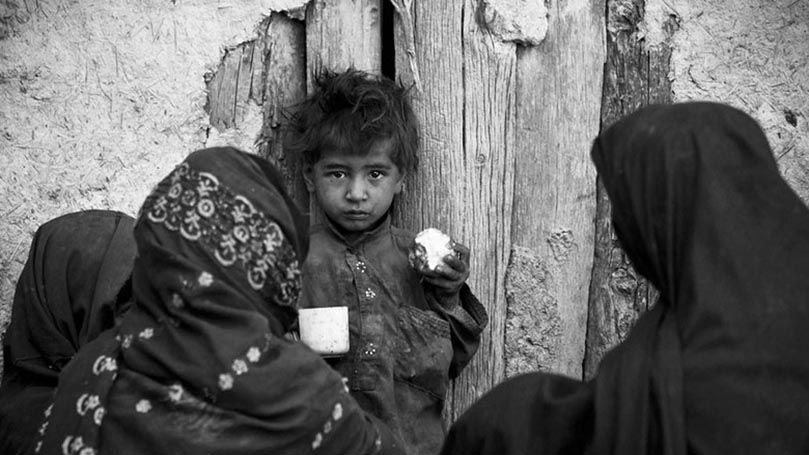
As is their habit, the bourgeois media and politicians are treating the current situation in Afghanistan as if everything went wrong under the Biden administration (if Republicans are speaking) or under the Trump administration (if Democrats are speaking). The historical roots of the current situation, involving the return to power of the Taliban are, as usual, ignored. The same sort of thing goes on with the recent controversy over Haitian migration to the United States. “Those crazy Afghans” or “those crazy Haitians” are dismissed as just impossible people—end of story.
What this does is obfuscate the ultimate cause of each crisis, and, especially, hide the hand of imperialism in creating the crisis in the first place.
Let’s look a bit at the history of Afghanistan and see how various kinds of imperialist intervention have shaped that country’s destiny. I won’t go all the way back to Alexander the Great but, rather, will start with the tsarist Russian and British interventions at the beginning of the 19th century.
The British “Great Game”
The “Great Game” was the term coined by the British Empire’s expansionist leaders to describe the dangerous rivalry of two European imperialisms: that of tsarist Russia and of the British Empire. From the reign of Catherine the Great on, the Romanov tsars worked hard to expand their control, first of the Caucuses region in Western Asia and then relentlessly eastward through Central Asia and eventually reaching the Pacific Ocean (seizing much Chinese-held territory in the process). In overcoming a whole series of Muslim Central Asian emirates (Khiva, Bokhara, Samarkand, etc.), the Russian army slaughtered vast numbers of original inhabitants of those regions and encroached more and more on Afghan territory.
At that time, the British colony of India was ruled not by the Colonial Office in London but by a private concern, the British East India Company. The head of the Indian government was the governor-general, whose headquarters were in Kolkata (called Calcutta by the English). The British ruled India directly through the company and indirectly through alliances with native princes. The British had a huge army in India, with its own officers and support systems that were not part of the regular British Army.
As Russian expansion in Central Asia pushed eastward, the British rulers of India became nervous. Would Russian arms eventually triumph over the rulers of Afghanistan and thus end up within marching distance of India, the source of so much of the wealth of the British ruling class? So, when Russian envoys began showing up at the court of the Emir (not yet king) of Afghanistan in Kabul, panicky alarm ensued in Kolkata.
In 1838 the British governor-general of India, Lord Auckland, alarmed that Afghan Emir Dost Mohammed Khan had received a Russian delegation, decided to invade Afghanistan, oust Dost Mohammed, and restore Shah Shuja, a deposed former ruler, as a British puppet in Kabul. A huge army composed of British and Indian troops invaded Afghanistan, captured Kabul, and installed Shuja on the throne. But in very short order, a counter movement of Dost Mohammed’s supporters arose, defeated and cornered the British, and drove them out of the country—with very few of the soldiers making it back to India alive. Rather than becoming a Russian puppet, Dost Mohammed immediately set about using the Anglo-Russian enmity for his own purposes, restoring friendly relations with the British while maintaining them with Russia.
For a while, this balancing game characterized Kabul’s policy. There were two more Anglo-Afghan Wars (from 1878 to 1880 and during the spring and summer of 1919), and Afghanistan managed to get full independence declaring itself a kingdom in 1926.
Enter the Soviet Union
But then came the October Revolution, and suddenly British India was no longer being threatened by the tsarist government but by the Bolshevik one. Afghanistan was still a chess piece in an international rivalry, but this time between British imperialism and the USSR. The Afghan ruler at the time of the Third Anglo-Afghan war, Amanullah Khan, continued to play off the British and the Soviets against each other (actually getting some material support from the Soviet Union), while he carried out important modernization projects.
At this point began the pattern of British imperialism, like its U.S. successor in the region, allying itself, and sometimes subsidizing extremist and ultra-conservative Muslim clerics and tribal leaders as a way of undermining native leftish leaders and Soviet influence in Afghanistan. The overthrow of Amanullah Khan in 1929 involved an element of this, and he was succeeded by the conservative Islamist Habibullah Kalakani. The Soviet Union, during the 1920s, was battling its own Islamic rebellion by the Basmachis in Central Asia, which gave it a motive for intervening in Afghanistan also, as the Basmaschis were using Afghanistan as a base to launch raids into Soviet territory. Habibullah Kalakani was eventually overthrown, captured, and executed after a bloody civil war.
From 1933 to 1973, Afghanistan was ruled by King Mohammed Zahir Shah. Like Amanullah, he was a modernizer who did the now traditional balancing act between the USSR and the United States. But in July 1973 he was overthrown and exiled by a coup led by his cousin, Prince Daoud, who was supported by leftist army officers and the Afghan communists. But soon Daoud turned against his communist allies, which led to his overthrow and death, and the rise of a socialist government with Nur Mohammed Taraki as president. Taraki’s government undertook radical reforms which greatly benefited the working class, the poor, and especially women. But in the conservative countryside, it ran into fierce opposition from landowners and religious conservatives, resulting in bloody clashes. The communist movement in Afghanistan was also severely divided, which soon led to internecine bloodshed and direct Soviet intervention.
The U.S. enters the fray
U.S. imperialism, fishing in troubled Afghan waters, increased its ties with, and military aid to, right-wing Islamist forces called the Mujahedeen. In addition to the United States, the Mujahedeen got support from Pakistan’s security services and from fighters from Saudi Arabia and elsewhere.
The result was a prolonged bloodbath that damaged the Afghan economy. But capitalist opinion makers in the United States did a good job of obfuscating the situation, presenting the Mujahedeen as “freedom fighters” fully deserving the military supplies, such as Stinger anti-aircraft missiles that the U.S. supplied to them. “Operation Cyclone,” as the U.S. intervention in Afghanistan was called, was promoted by Congressman Charlie Wilson (D-Texas), whose role in getting CIA funds to the Mujahedeen was touted in a book and a film (Charlie Wilson’s War).
There apparently was no force among the Afghan rebel factions too extreme or too violent to receive this CIA largess. The Haqqani network, the forces of Gulbuddin Hekmatyar, and others were armed at the expense of U.S. taxpayers, as well as by Saudi and Pakistani governments. They were reactionary and repressive and violent, but that was OK with their U.S. paymasters because they were fighting against the USSR and against Afghan communists. Ronald Reagan praised them and even received some of them in the White House. Of course, many of them subsequently started attacking U.S. and allied forces, which should have surprised nobody.
The last of the Soviet-allied Afghan presidents, Najibullah, tried to persuade the Soviet government not to withdraw its troops from Afghanistan, but failed. So the last Soviet troops were withdrawn in 1989, but Najibullah managed to hang on to power until 1992. Meanwhile the Pakistani-sponsored Taliban faction of the guerrillas grew in strength and took over the government in Kabul in 1996 and executed former president Najibullah.
In power, the Taliban subjected Afghanistan’s diverse population to a strict enforcement of a conservative “Deobandi” interpretation of Islamic law, which was especially detrimental to women’s rights and those of religious dissidents. But after the terrorist attacks on the United States on September 11, 2001, a massive U.S. and allied military intervention, ostensibly to put an end to Osama bin Ladin and his Al-Qaeda organization, eventually drove the Taliban out of power.
The three successive presidents that the fall of the Taliban brought to power, Burhaniddin Rabani, Hamid Karzai, and Ashraf Ghani, were not able to establish a stable support base. Corruption and misgovernment destroyed any confidence that the Afghan people ever had in the regime that imperialist intervention brought to power. This is why Ghani was driven from power and the Taliban returned this summer.
To many Americans, the events in Afghanistan seem distant, but they have deep ties to U.S. foreign policy. Each televised image of a Taliban soldier patrolling a street or of female students protesting while wearing hijabs is a stark reminder of this fact. We in the U.S. have a special role to play on the world stage—to protest, lobby, and shout loud and clear our opposition to U.S. imperialist foreign policy.
Image: Zoriah (CC BY-NC 2.0).


 Join Now
Join Now